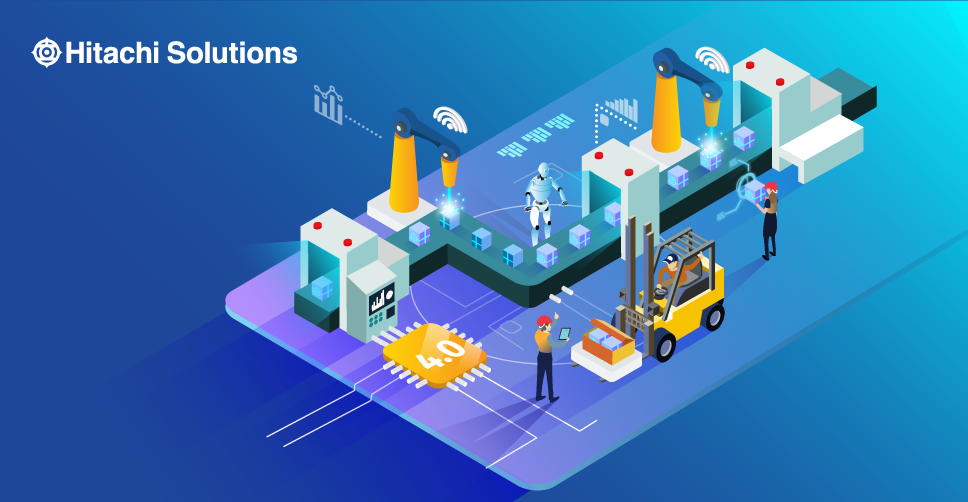Introduction to IoT in Home Design and Comfort
The Dawn of a New Era: IoT in Homes
The Internet of Things (IoT) is no longer a futuristic concept but a rapidly evolving reality, revolutionizing the way we live, work, and interact with our environments. At the heart of this revolution lies the smart home — a space where devices communicate, learn, and respond to our needs with unprecedented precision and ease. IoT is transforming traditional homes into intelligent ecosystems that not only elevate comfort but also redefine home design.
Imagine waking up to your home adjusting the temperature perfectly to your liking, the lights gently illuminating your room in calming hues, and your coffee machine starting to brew — all without lifting a finger. This seamless integration of technology into everyday life is the hallmark of IoT-enhanced homes, where convenience, efficiency, and style merge.
Evolution of Home Design and Comfort with IoT
Home design has always reflected the lifestyle and technological advances of its era. From the introduction of electricity to the rise of central heating, each leap forward has improved comfort and functionality. The integration of IoT marks the latest paradigm shift, enabling personalized environments that adapt dynamically to inhabitants’ habits and preferences.
Historically, home comfort was limited to manual adjustments — turning a thermostat, switching on a lamp, or closing blinds. IoT devices now automate these processes intelligently, learning routines and optimizing settings to reduce waste and maximize wellbeing. The smart home is no longer just about gadgets; it’s about creating harmonious living spaces that anticipate and fulfill our desires.
Key Benefits of Integrating IoT in Homes
1. Personalized Comfort and Convenience
IoT enables homes to learn and adapt to individual preferences, ensuring that heating, lighting, and entertainment systems respond seamlessly to your lifestyle. Whether it’s adjusting temperature based on your schedule or setting the perfect lighting scene for movie night, smart homes offer an unparalleled level of personalization.
2. Energy Efficiency and Cost Savings
By intelligently managing energy consumption — turning off unused devices, optimizing heating and cooling, and integrating renewable energy sources — IoT reduces both environmental impact and utility bills. Smart meters and energy monitors provide real-time insights, empowering users to make informed decisions.
3. Enhanced Security and Safety
IoT security systems include smart locks, cameras with facial recognition, and motion sensors that alert homeowners to unusual activity. Integration with emergency services and AI-driven threat detection add layers of protection, enhancing peace of mind.
4. Improved Health and Wellbeing
Air quality sensors, sleep trackers embedded in smart beds, and wellness-focused lighting systems help create healthier living environments. IoT supports proactive health monitoring, early detection of hazards like carbon monoxide leaks, and promotes restful sleep.
5. Increased Property Value and Modern Appeal
Smart homes attract buyers looking for modern conveniences and sustainability. Incorporating IoT devices enhances marketability, potentially increasing property value and speeding up sales.
Consumer Trends and Adoption Rates
Consumer interest in smart homes has surged over the last decade. According to the International Data Corporation (IDC), global smart home device shipments surpassed 600 million units in 2024, with projections estimating growth to exceed 1 billion units by 2030. The rise is fueled by:
-
Decreasing device costs
-
Greater ease of installation and use
-
Enhanced interoperability through standards like Matter
-
Growing awareness of energy and security benefits
Younger generations, particularly Millennials and Gen Z, show strong preference for connected homes, valuing technology that integrates effortlessly into daily routines. Meanwhile, the COVID-19 pandemic accelerated adoption as more people prioritized home comfort and remote monitoring.
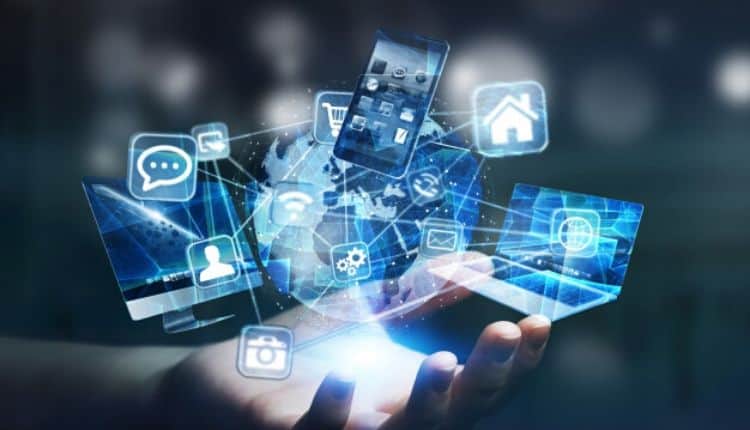
Step-by-Step: How to Turn Your Traditional Home into a Smart Home
Table 1: Global Smart Home Market Growth & Adoption Rates (2020-2030)
| Year | Global Smart Home Market Size (Billion USD) | Estimated Number of Smart Home Devices (Millions) | % Households with Smart Home Devices (Global Average) | Key Growth Drivers |
|---|---|---|---|---|
| 2020 | 80 | 350 | 18% | Early adopters, tech innovation |
| 2022 | 110 | 500 | 25% | Price reduction, increased consumer awareness |
| 2024 | 160 | 620 | 34% | Improved interoperability, pandemic impact |
| 2026* | 220 | 800 | 45% | AI integration, 5G expansion |
| 2030* | 350 | 1,200 | 65% | Ubiquitous connectivity, smart city integration |
*Projections based on industry reports and market analysis.
Challenges in IoT Adoption and How They Are Overcome
Despite impressive growth, challenges remain:
-
Device Compatibility: Many IoT products historically used proprietary protocols, creating silos. The emergence of universal standards like Matter is overcoming this, enabling seamless device interaction.
-
Privacy and Security Concerns: IoT devices collect vast amounts of personal data, raising privacy issues. Manufacturers now implement stronger encryption, regular software updates, and user education to mitigate risks.
-
Complexity and Usability: Early IoT setups were complicated for average users. User-friendly interfaces, voice assistant integration, and professional installation services have simplified adoption.
-
Cost Barriers: While prices have fallen, comprehensive smart home systems can be expensive. Modular purchases and DIY-friendly devices allow gradual upgrades.
As technology matures and consumer confidence grows, these challenges continue to diminish, paving the way for widespread IoT integration.
IoT Devices Revolutionizing Home Design
Introduction
The fusion of Internet of Things (IoT) technology with home design is creating spaces that are not only more functional but also aesthetically aligned with modern lifestyles. Today’s smart homes leverage IoT devices to transform every element—from lighting and climate control to furniture and security systems—turning passive environments into responsive, intelligent living spaces.
In this section, we explore the most impactful IoT devices reshaping home design, focusing on how they integrate technology, style, and usability to create seamless, comfortable environments.
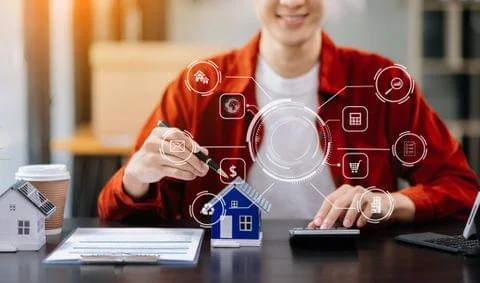
Home-Autommation-Trends-1.jpg.bv_resized_mobile.jpg.bv
Smart Lighting and Ambiance Control
Lighting plays a pivotal role in setting the mood, enhancing functionality, and even influencing wellbeing. Traditional lighting systems are static, requiring manual control. IoT-enabled smart lighting systems revolutionize this with dynamic, programmable, and sensor-driven solutions.
Features and Benefits
-
Color and Brightness Customization: Adjust lights’ color temperature and intensity to suit activities or time of day, promoting circadian rhythm alignment and mood enhancement.
-
Motion and Occupancy Sensors: Automatically switch lights on/off based on room occupancy, optimizing energy use.
-
Voice and App Control: Control lighting remotely or hands-free via smartphone apps or virtual assistants (e.g., Amazon Alexa, Google Assistant).
-
Integration with Other Devices: Sync lights with music, TV, or security systems for immersive experiences or alerts.
Popular devices include Philips Hue, LIFX, and Nanoleaf, each offering distinctive design elements—from sleek bulbs to artistic light panels that become part of the décor.
Intelligent Climate Control (Thermostats and HVAC Systems)
Heating, ventilation, and air conditioning (HVAC) significantly impact comfort and energy bills. IoT-driven smart thermostats and HVAC systems enhance home design by providing adaptive climate control.
Key Advantages
-
Learning Algorithms: Devices like Nest Learning Thermostat learn household routines and adjust settings automatically to maximize comfort and efficiency.
-
Zoning Capabilities: Advanced HVAC systems can heat or cool specific rooms independently, reducing energy waste.
-
Remote Access: Control temperature from anywhere using apps, allowing pre-conditioning of your home before arrival.
-
Energy Reporting: Detailed usage reports help homeowners identify energy-saving opportunities.
These devices contribute to cleaner, more comfortable indoor environments and harmonize with modern home aesthetics through minimalistic designs.
Smart Furniture and Modular Designs
The furniture industry is embracing IoT by creating smart pieces that offer functionality beyond traditional use. Smart furniture enhances comfort, utility, and connectivity.
Examples
-
Smart Beds: Adjustable firmness, sleep tracking, temperature regulation, and even anti-snore features built into beds from companies like Sleep Number.
-
Desks and Seating: Height-adjustable desks with memory presets, integrated wireless charging pads, or built-in speakers support ergonomic and tech-savvy workspaces.
-
Multi-functional Modular Units: Sofa systems that incorporate speakers, charging stations, or modular components that adapt to changing needs and spaces.
Such pieces meld technology with design, offering both visual appeal and enhanced living comfort.
Home Automation Systems and Integration
Centralized home automation hubs coordinate multiple IoT devices to work in harmony, creating a cohesive smart home ecosystem.
Benefits
-
Unified Control: Manage lighting, climate, security, and entertainment through a single interface.
-
Scenario Automation: Create custom scenes or routines, such as “Good Morning” activating lights, coffee maker, and news briefing simultaneously.
-
Interoperability: Emerging standards like Matter enable devices from different brands to communicate, simplifying setup and expanding choices.
-
Energy and Security Monitoring: Automation systems track energy use and detect anomalies or security breaches in real time.
Leading platforms include Apple HomeKit, Samsung SmartThings, Google Home, and Amazon Alexa, each offering unique integrations and user experiences.
Impact on Interior Design Aesthetics and Functionality
IoT devices influence interior design beyond mere functionality. Designers now incorporate technology as an integral element of aesthetics and space planning.
-
Minimalism and Clean Lines: Smart devices are designed to be discreet, often wireless, with sleek finishes that blend into home décor.
-
Flexible and Adaptive Spaces: Modular smart furniture allows rooms to transform quickly to support different activities, enhancing spatial efficiency.
-
Artistic Expression: Products like Nanoleaf’s geometric light panels or Moodo’s scent diffusers add artistic layers to living spaces.
-
Material Innovation: Smart textiles and surfaces with embedded sensors or touch controls integrate technology invisibly into upholstery and walls.
Designers collaborate with technologists to create homes that are both smart and beautiful, catering to a generation that values style as much as functionality.

10 Ways IoT Is Redefining Home Decor and Functionality
Table 2: Comparison of Popular IoT Devices for Home Design
| Device Category | Popular Brands/Models | Key Features | Estimated Cost (USD) | Primary Benefits | Design Style |
|---|---|---|---|---|---|
| Smart Lighting | Philips Hue, LIFX, Nanoleaf | Color control, app/voice control, sensor-based | $50–$250 (per unit) | Ambiance, energy saving, remote control | Sleek bulbs, artistic panels |
| Smart Thermostats | Nest Learning, Ecobee, Honeywell | Learning AI, zoning, energy reports, app control | $120–$250 | Comfort, energy efficiency | Minimalist, compact |
| Smart Furniture | Sleep Number Beds, Autonomous Desks | Adjustable firmness, sleep tracking, charging | $800–$3000+ | Health, ergonomic comfort | Modern, ergonomic |
| Home Automation Hubs | Apple HomeKit, Samsung SmartThings | Unified control, automation routines, interoperability | $80–$200 | Convenience, system integration | Discreet, compact |
| Smart Security Devices | Ring, Arlo, Nest Cameras | Motion detection, facial recognition, alerts | $100–$400 | Safety, remote monitoring | Minimalist, robust |
How IoT Transforms Everyday Home Activities
Introduction
The Internet of Things (IoT) is no longer just a futuristic concept—it has become a practical reality reshaping daily life inside the home. From routine chores to personal comfort and security, IoT devices streamline and automate tasks, making everyday activities more efficient, personalized, and enjoyable. This section explores the myriad ways IoT integrates into daily routines, transforming mundane activities into intelligent, connected experiences.
Smart Kitchen: Cooking and Food Management Made Easy
The kitchen is one of the most active spaces in the home, and IoT devices have revolutionized how people cook, store, and manage food.
Connected Appliances
-
Smart Refrigerators: Equipped with cameras and sensors, they track food inventory, suggest recipes based on available ingredients, and alert you to expiration dates. Brands like Samsung Family Hub offer touchscreen interfaces for grocery lists and meal planning.
-
Smart Ovens and Cooktops: Preheat remotely via smartphone apps, monitor cooking progress, and adjust temperature automatically. Examples include June Oven and Tovala.
-
Voice-Controlled Kitchen Assistants: Devices such as Amazon Echo or Google Nest help set timers, convert measurements, and control smart appliances hands-free.
Benefits
-
Reduced food waste
-
Streamlined meal preparation
-
Enhanced cooking precision and safety
Automated Cleaning Systems
Cleaning tasks are often time-consuming and repetitive. IoT-powered cleaning devices bring convenience and thoroughness.
Robot Vacuums and Mops
-
Brands like iRobot Roomba and Roborock provide scheduled cleaning, room mapping, and app control.
-
Integration with smart home hubs enables automatic cleaning when no one is home.
Smart Trash Cans
-
Features include sensor-activated lids and alerts for trash collection schedules or full bins (e.g., Townew smart trash can).
Laundry Automation
-
IoT-enabled washers and dryers from Samsung and LG allow remote start/stop, cycle monitoring, and maintenance notifications.
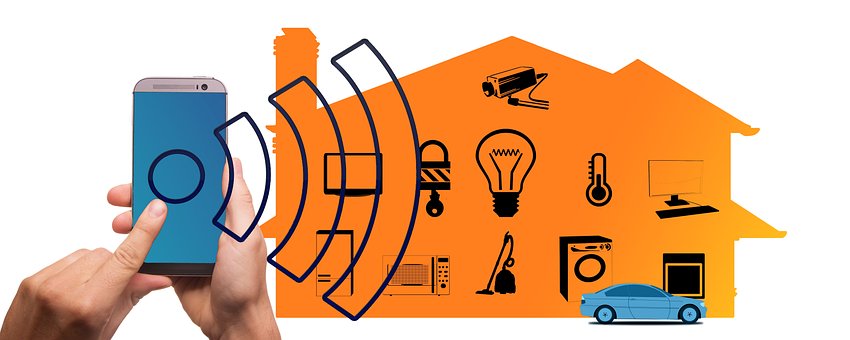
smart-homes-impact-of-internet-of-things-iot-and-how-it-helps-us-shape-our-lives
Intelligent Security and Safety Systems
Home security is paramount, and IoT systems offer comprehensive monitoring, threat detection, and rapid response capabilities.
Key Components
-
Smart Locks: Remote locking/unlocking, temporary access codes for guests, and activity logs. Examples: August Smart Lock, Yale Linus.
-
Security Cameras: Real-time streaming, motion detection, facial recognition, and integration with lighting or alarm systems. Brands include Ring, Nest Cam, Arlo.
-
Environmental Sensors: Smoke, carbon monoxide, water leak detectors notify homeowners immediately of hazards.
Benefits
-
Enhanced peace of mind through constant monitoring
-
Proactive threat detection and alerts
-
Simplified guest and family access management
Personalized Entertainment Experiences
IoT enables immersive, tailored entertainment through smart devices and integration.
Smart Speakers and Multi-Room Audio
-
Control music with voice commands or apps, stream from multiple services, and synchronize audio across rooms with Sonos, Bose, or Amazon Echo devices.
Smart TVs and Streaming Devices
-
Voice search, personalized recommendations, and seamless integration with other smart home devices enhance viewing experiences.
Ambient Environment Adjustments
-
Lighting and sound adjust dynamically to the content being played, increasing immersion.
Health and Wellness Monitoring
IoT devices promote proactive health management and wellbeing within the home.
Wearables and Sensors
-
Smartwatches, fitness trackers, and sleep monitors track vitals and daily activity.
Connected Scales and Blood Pressure Monitors
-
Automatically sync health data to apps for comprehensive monitoring.
Integration with Smart Home
-
Lighting and climate adjust based on user activity and health needs.
Table 3: Popular IoT Devices for Everyday Home Activities
| Device Category | Popular Models/Brands | Key Features | Average Cost (USD) | Main Benefits | Integration Examples |
|---|---|---|---|---|---|
| Smart Refrigerators | Samsung Family Hub, LG InstaView | Inventory tracking, touchscreen, recipe suggestions | $1,500–$4,000 | Food management, meal planning | Sync with smart assistants |
| Robot Vacuums | iRobot Roomba, Roborock S7 | Scheduled cleaning, room mapping, app control | $300–$1,200 | Automated cleaning, convenience | Integration with smart home hubs |
| Smart Locks | August Smart Lock, Yale Linus | Remote lock/unlock, temporary access codes | $150–$300 | Enhanced security and access control | Voice assistant integration |
| Security Cameras | Ring, Nest Cam, Arlo | Motion detection, alerts, facial recognition | $100–$400 | Real-time monitoring, proactive alerts | Integration with lighting and alarms |
| Smart Speakers | Amazon Echo, Google Nest Audio | Voice control, multi-room sync | $50–$200 | Hands-free control, personalized audio | Controls other smart devices |
Enhancing Comfort with IoT Solutions
Introduction
Comfort in the modern home goes beyond traditional furnishings and temperature settings. The Internet of Things (IoT) transforms comfort into a dynamic, personalized experience by integrating smart technologies that respond intuitively to your needs. This part explores how IoT devices enhance physical comfort, promote health, and create a more enjoyable, relaxing living environment.
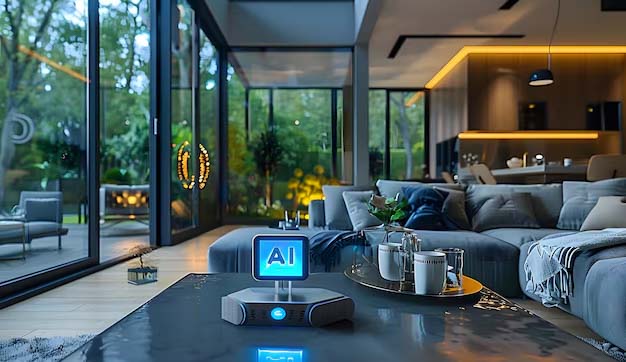
smart-homes-smart-home-smart-home-devices-smart-home-technology-modern-luxury-interior-modern-house
Smart Climate and Air Quality Management
Maintaining the ideal indoor climate and air quality is essential for wellbeing and comfort. IoT devices continuously monitor and adjust these factors, ensuring you breathe cleaner air and live in a more comfortable space.
Air Quality Sensors and Purifiers
-
Features: Detect pollutants (VOC, CO2, PM2.5), humidity, temperature. Devices like Awair Element and IQAir AirVisual send real-time alerts and trigger purifiers automatically.
-
Benefits: Reduce allergens, remove harmful particles, and improve respiratory health.
Smart Thermostats and HVAC Systems
-
Devices such as Nest Learning Thermostat and Ecobee adapt temperature based on occupancy, weather forecasts, and user habits.
-
Benefits: Maintain optimal temperatures with minimal energy consumption.
Humidity Control Devices
-
Smart humidifiers and dehumidifiers adjust humidity levels automatically, preventing dry air or excess moisture that can cause discomfort or mold.
Personalized Lighting for Health and Mood
Lighting impacts more than visibility—it regulates circadian rhythms, affects mood, and enhances productivity.
Circadian Rhythm Lighting
-
Systems like Philips Hue and LIFX simulate natural light changes from morning to evening, promoting alertness during the day and relaxation at night.
-
Automated adjustments help improve sleep quality and mental wellbeing.
Mood and Activity-Based Scenes
-
Pre-set lighting scenes can create ambience for reading, working, entertaining, or relaxing.
-
Motion and ambient light sensors enable adaptive brightness and color temperature.
Sleep Optimization with IoT
Smart sleep technologies use data and environmental controls to improve rest quality.
Smart Mattresses and Sleep Trackers
-
Products like Eight Sleep and Sleep Number beds track sleep cycles and adjust firmness or temperature dynamically.
-
Wearables such as Fitbit and Oura Ring monitor sleep stages and provide actionable insights.
Environment Automation
-
IoT controls blackout curtains, white noise machines, and room temperature to create an ideal sleep environment.
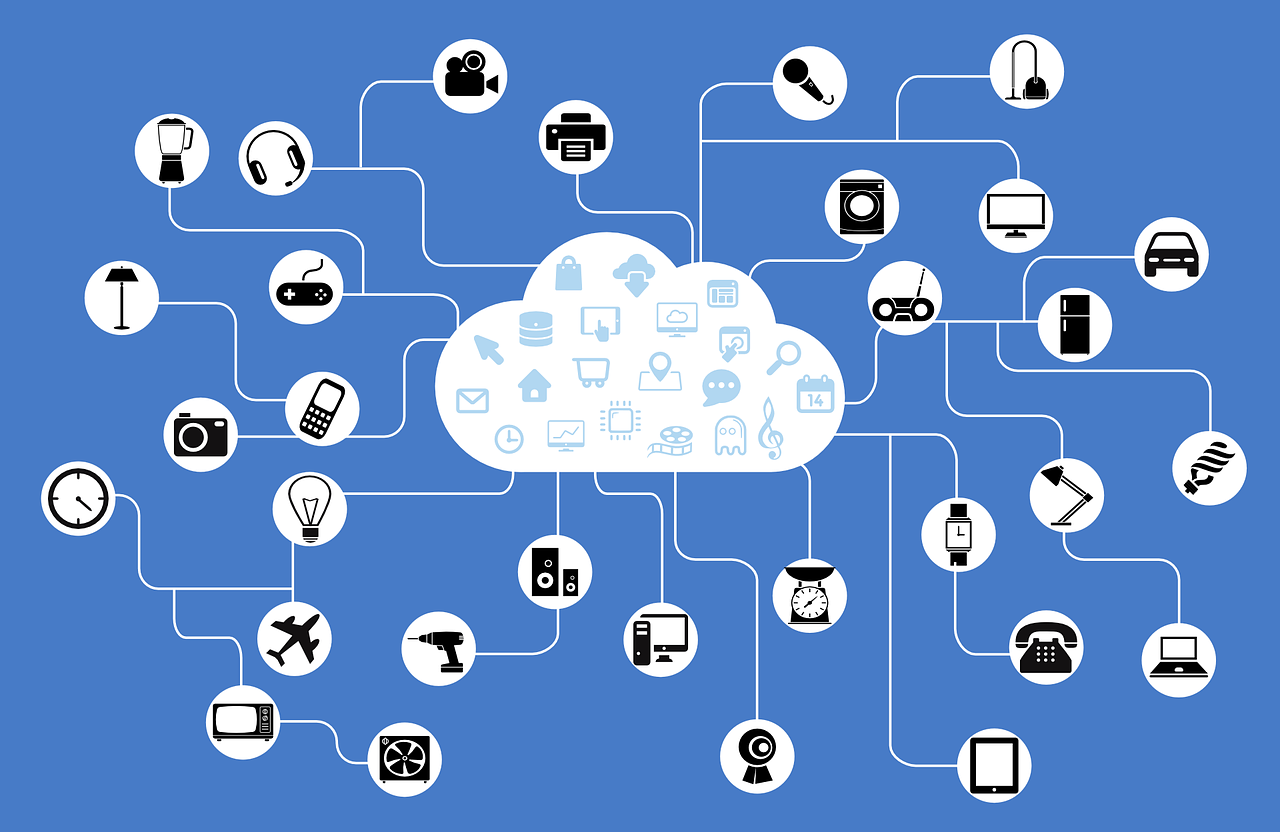
Top Smart Home Trends in 2025
Voice Assistants for Hands-Free Comfort Control
Voice assistants (Amazon Alexa, Google Assistant, Apple Siri) centralize control of IoT devices, enabling effortless comfort management.
Capabilities
-
Control lighting, temperature, entertainment, and more with simple voice commands.
-
Access news, reminders, and personalized routines without lifting a finger.
Accessibility
-
Essential for elderly or mobility-impaired individuals, enabling independence and ease.
Smart Appliances and Kitchen Comfort
Modern IoT appliances streamline cooking and cleanup, making the kitchen more comfortable and user-friendly.
Smart Refrigerators
-
Monitor food freshness, suggest recipes, and manage grocery lists.
Connected Ovens and Cooktops
-
Remote pre-heating, cooking programs, and notifications ensure perfect results with less hassle.
Automated Dishwashers and Coffee Makers
-
Customizable cycles and scheduling match user preferences and daily routines.
Table 4: Leading IoT Devices Enhancing Home Comfort
| Device Category | Popular Models/Brands | Core Features | Average Cost (USD) | Comfort Benefits | Integration Examples |
|---|---|---|---|---|---|
| Air Quality Monitors | Awair Element, IQAir AirVisual | VOC/CO2/PM2.5 detection, real-time alerts | $150–$300 | Healthier air, allergy relief | Auto-activation of purifiers |
| Smart Thermostats | Nest Learning Thermostat, Ecobee | Adaptive temperature control, occupancy sensing | $120–$250 | Ideal climate, energy savings | Integration with HVAC and voice assistants |
| Circadian Lighting Systems | Philips Hue, LIFX, Yeelight | Automated color temp changes, mood scenes | $50–$200 per bulb | Improved sleep, mood enhancement | Sync with smart assistants |
| Smart Mattresses | Eight Sleep, Sleep Number | Sleep tracking, temperature and firmness control | $1,000–$3,000 | Better rest, personalized comfort | Integrates with sleep tracking apps |
| Voice Assistants | Amazon Echo, Google Nest Audio | Voice control, routine automation | $50–$200 | Hands-free management, accessibility | Controls multiple smart devices |
| Smart Kitchen Appliances | Samsung Family Hub, June Oven | Food inventory, remote cooking control | $1,500–$4,000 | Cooking convenience, food management | Voice and app control |
The Future of IoT in Home Comfort and Design
Introduction
As technology rapidly evolves, the Internet of Things (IoT) is set to transform home comfort and design in unprecedented ways. The future holds a vision of homes that are not only smarter but also deeply intuitive, sustainable, and seamlessly integrated with daily life. This final part explores upcoming trends, innovations, and challenges in IoT-driven home environments, outlining how these advancements will redefine comfort, aesthetics, and functionality.
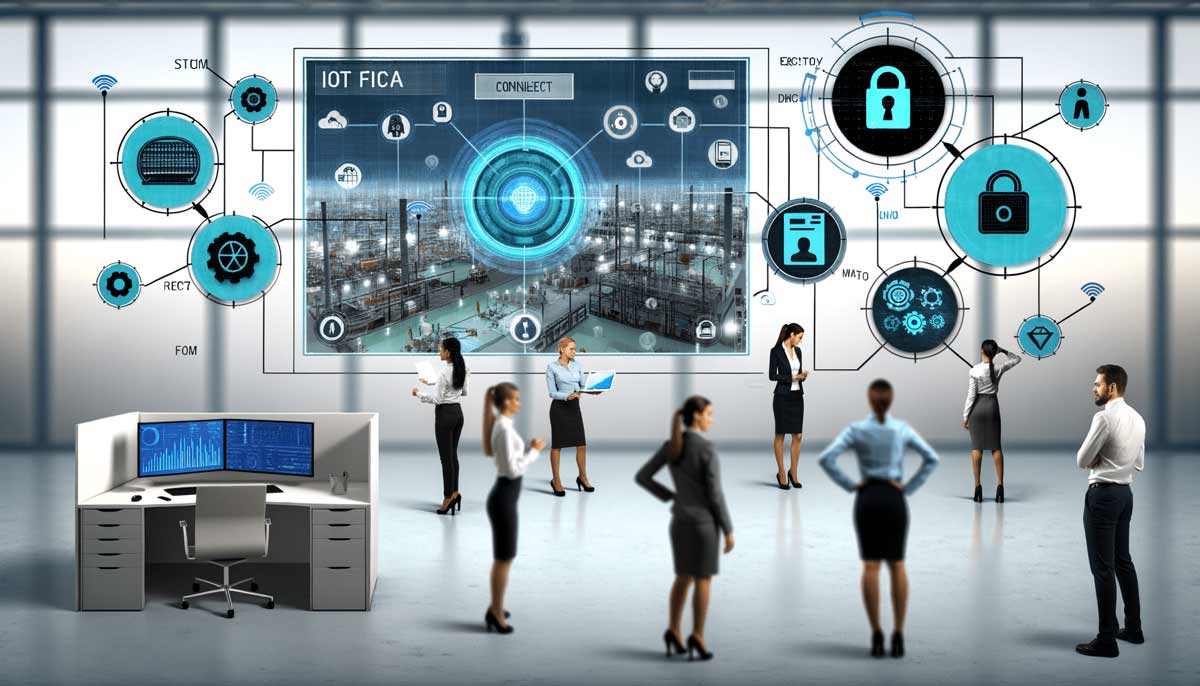
The-IoT-Revolution-and-Your-Business-Recovered
Emerging Trends in IoT Home Technology
AI-Driven Personalization
-
Future IoT systems will leverage artificial intelligence to learn from user behaviors, preferences, and health data to tailor home environments automatically.
-
Predictive adjustments will enhance comfort, energy efficiency, and even mood regulation.
Edge Computing and Faster Processing
-
Processing data locally on devices (edge computing) reduces latency and increases responsiveness.
-
Real-time decision-making in lighting, climate control, and security will become more sophisticated.
Enhanced Interoperability and Standards
-
Industry efforts aim to unify protocols and standards, enabling diverse devices to communicate flawlessly.
-
This will simplify smart home setup and broaden device compatibility.
Integration with Smart Cities and Grids
-
Homes will increasingly connect with external systems such as smart energy grids and urban infrastructure.
-
This integration enables optimized energy consumption, dynamic pricing benefits, and environmental impact monitoring.
Sustainability and Energy Efficiency
IoT for Green Living
-
Smart energy meters, solar panel management, and water usage sensors empower homeowners to reduce waste and carbon footprint.
-
Automated systems adjust energy consumption based on real-time data and weather forecasts.
Circular Economy and Device Longevity
-
Future IoT devices will be designed for longevity, repairability, and recyclability, supporting sustainable consumption models.
Advanced Comfort Innovations
Multi-Sensory Environments
-
Integration of scent diffusers, ambient sound systems, and tactile feedback to create immersive, personalized atmospheres.
-
IoT-enabled art installations and dynamic furniture will adapt based on user moods or activities.
Health-Centric Homes
-
Continuous health monitoring and environment adjustments (air quality, lighting, noise) tailored to individual wellness needs.
-
Integration with telemedicine and emergency services for proactive healthcare.
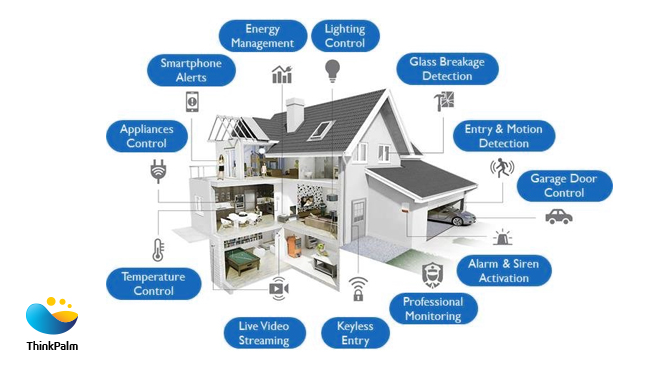
Living-in-the-Future-How-IoT-is-Making-Life-More-Connected-Than-Ever-Before
Security and Privacy in Future IoT Homes
Enhanced Cybersecurity Measures
-
Adoption of blockchain, AI-driven threat detection, and hardware-based security modules will safeguard smart homes.
-
Privacy-by-design principles will ensure user data is protected and user control is paramount.
Ethical Considerations
-
Transparency in data usage and user consent will become central to IoT deployment.
-
Regulation and industry guidelines will evolve to address emerging ethical issues.
Challenges to Overcome
-
Complexity of Setup: Despite advances, simplifying user experience remains critical.
-
Cost Barriers: Making high-tech IoT solutions affordable and accessible to a wider audience.
-
Device Compatibility: Achieving universal interoperability continues to be a hurdle.
-
Data Privacy: Balancing convenience with strict privacy protections.
Table 5: Future IoT Technologies and Their Impact on Home Comfort and Design
| Emerging Technology | Description | Potential Impact | Estimated Timeframe | Key Benefits | Challenges |
|---|---|---|---|---|---|
| AI-Powered Personalization | Homes learn and adapt to occupant habits | Enhanced comfort, energy savings, health benefits | 2–5 years | Tailored environments, predictive control | Data privacy, complexity |
| Edge Computing | Local data processing for faster responses | Real-time smart home adjustments | 1–3 years | Reduced latency, improved reliability | Hardware cost, standardization |
| Interoperability Standards | Unified communication protocols | Seamless device integration | 3–5 years | Simplified setup, broad device compatibility | Industry cooperation |
| Smart City Integration | Home connects with urban infrastructure | Optimized energy use, smarter resource management | 5–10 years | Environmental benefits, cost savings | Infrastructure investment |
| Multi-Sensory Environments | Integrated scent, sound, lighting, and tactile | Immersive comfort and wellness | 3–7 years | Mood enhancement, personalized experiences | Cost, user acceptance |
| Health-Centric Homes | Continuous health monitoring and environment control | Improved wellness, emergency response | 2–5 years | Proactive healthcare, remote monitoring | Data security, ethical concerns |
| Blockchain Security | Decentralized data protection | Robust cybersecurity and privacy | 2–5 years | Trustworthy data handling | Technical complexity, adoption barriers |
Conclusion
The future of IoT in home comfort and design promises a transformative leap toward homes that are not only smarter but also more responsive, sustainable, and attuned to individual needs. As AI, edge computing, and advanced sensors become standard, the modern home will evolve into a dynamic ecosystem prioritizing comfort, wellness, and environmental stewardship. Overcoming challenges related to complexity, cost, and privacy will be crucial to unlocking this vision’s full potential. Embracing these technologies thoughtfully will usher in a new era of intelligent living, where every aspect of the home adapts seamlessly to enhance quality of life.
Frequently Asked Questions (FAQ)
Q1: What exactly is the Internet of Things (IoT) in home design?
A1: IoT in home design refers to interconnected smart devices and systems within a house that communicate via the internet. These devices collect data and automate tasks to improve comfort, security, energy efficiency, and convenience. Examples include smart thermostats, lighting, security cameras, and appliances.
Q2: How do IoT devices enhance home comfort compared to traditional devices?
A2: Unlike traditional devices that operate independently, IoT devices share data and respond dynamically to user behavior and environmental changes. This allows for personalized climate control, automated lighting scenes, improved air quality, and even health monitoring — all designed to create a more comfortable living environment.
Q3: Are IoT smart home devices difficult to install and set up?
A3: Many IoT devices are designed with user-friendly apps and step-by-step instructions for straightforward installation. While some advanced systems may require professional help, the growing trend is toward plug-and-play solutions accessible to most homeowners.
Q4: What security risks are associated with IoT devices in the home?
A4: IoT devices connected to the internet can be vulnerable to hacking or data breaches if not properly secured. It’s crucial to use strong, unique passwords, regularly update device firmware, and choose products from reputable manufacturers with robust security features.
Q5: Can IoT devices help reduce energy consumption?
A5: Yes! Smart thermostats, lighting, and appliances optimize energy use by adapting to your routines and environmental conditions. For example, thermostats learn your schedule to reduce heating or cooling when you’re away, saving money and reducing carbon footprints.
Q6: Will IoT technology be compatible with all smart home devices in the future?
A6: Industry efforts are underway to standardize communication protocols, improving interoperability. While compatibility has been a challenge, upcoming advancements aim to enable seamless integration of devices from different brands within unified smart home ecosystems.
Q7: How does IoT contribute to healthier indoor environments?
A7: IoT air quality sensors monitor pollutants and adjust purifiers automatically. Smart humidifiers and lighting also contribute to better respiratory health and circadian rhythm regulation, improving overall wellbeing.
Q8: Are IoT smart homes expensive to implement?
A8: Costs vary widely depending on device types and system complexity. Basic smart devices like bulbs and plugs can be affordable entry points, while full smart home ecosystems with advanced sensors and AI personalization can be more costly. However, energy savings and enhanced comfort often justify the investment.
Q9: What role will AI play in the future of IoT homes?
A9: AI will drive smarter, more predictive home automation by analyzing behavioral data and environmental factors. This will enable homes to anticipate needs, adjust settings proactively, and offer tailored comfort without manual input.
Q10: How can privacy be ensured with IoT devices?
A10: Ensuring privacy involves choosing devices with strong encryption, transparent data policies, and user control over data sharing. Regular software updates and secure home networks are also essential. Regulatory frameworks are evolving to protect consumer privacy better.
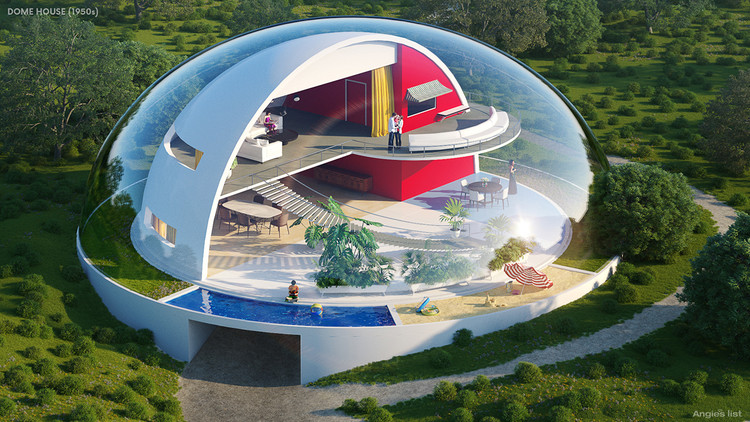
Houses-of-the-future-dome-house
Authoritative Backlink Sources for IoT and Smart Home Content
-
Industry Leaders & Standards Organizations
-
Consumer Technology Association (CTA) — authoritative insights on smart home tech trends and standards
-
IEEE Internet of Things Journal — peer-reviewed research on IoT advancements
-
Zigbee Alliance — info on IoT interoperability standards
-
Technology & Research Publications
-
Smart Home Product Reviews and Testing Labs
-
Energy and Sustainability Resources
-
Privacy and Security Guidelines
How to Use These Backlinks Effectively:
-
Embed links naturally within relevant sections, e.g., when discussing interoperability, link to Zigbee Alliance.
-
Use anchor texts like “latest IoT interoperability standards,” “AI in smart homes research,” or “best smart home device reviews.”
-
Cite government and research sources when covering energy efficiency and security for higher trust signals.


